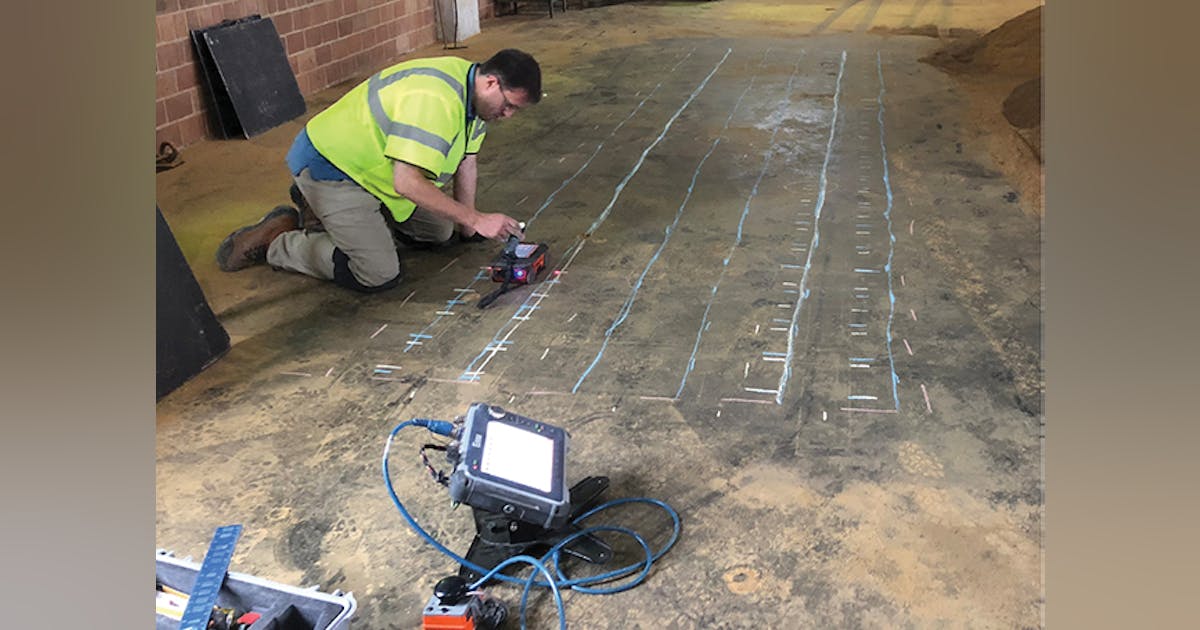Local RainierGPR Service Areas for Accuracy Concrete Scanning
Local RainierGPR Service Areas for Accuracy Concrete Scanning
Blog Article
Enhancing Project Preparation and Execution Through Advanced Concrete Scanning Methods
In the realm of task planning and execution, precision and foresight are crucial elements that can make the difference in between success and obstacles. Advanced concrete scanning strategies have actually emerged as a sophisticated tool readied to boost the criteria of project monitoring within the building industry. By using sophisticated technology, these strategies provide a glimpse into the structural stability of a structure even before the initial brick is laid. The implications of such improvements are extensive, promising a paradigm shift in exactly how tasks are come close to and delivered.
Advantages of Advanced Concrete Scanning Methods

Improved Accuracy in Task Evaluations
Enhancing project assessments through sophisticated concrete scanning methods dramatically increases the accuracy and dependability of building analyses. By using advanced scanning modern technologies such as ground-penetrating radar (GPR) and 3D imaging, project teams can currently obtain comprehensive insights into the condition of concrete structures, determining possible problems or weak points that may not show up to the naked eye. This enhanced degree of precision in job evaluations allows construction specialists to make even more enlightened decisions relating to repair service and maintenance methods, leading to improved overall task outcomes.
In addition, the boosted accuracy in job analyses attained via innovative concrete scanning strategies helps in reducing the threat of unanticipated issues throughout the building and construction phase. By proactively identifying covert anomalies within concrete structures, such as rebar rust or spaces, project teams can resolve these issues beforehand, avoiding expensive hold-ups and remodel later in the project lifecycle. Eventually, the enhanced accuracy in job assessments facilitated by advanced concrete scanning strategies contributes to greater performance, cost-effectiveness, and quality in construction projects.
Very Early Recognition of Structural Obstacles
Very early detection of structural obstacles plays a critical role in guaranteeing the stability and safety and security of concrete structures throughout the building and construction procedure. Recognizing possible problems at an early stage permits prompt treatment, protecting against costly rework, timetable delays, and security threats. Advanced concrete scanning strategies, such as ground-penetrating radar (GPR) and 3D imaging, make it possible for task teams to uncover surprise flaws, gaps, support layout discrepancies, and various other abnormalities that could endanger the framework's security.
By executing these techniques during the planning and implementation stages, construction experts can proactively address architectural difficulties prior to they intensify right into major troubles. For example, identifying insufficient concrete cover over support bars beforehand can stop corrosion and architectural weakening in the lengthy run - RainierGPR Service Areas. Furthermore, determining variations in concrete thickness or thickness can help maximize product use and you can try here guarantee consistent stamina buildings throughout the framework

Ultimately, early identification of architectural obstacles via advanced concrete scanning not just improves the total quality and longevity of the building and construction but additionally adds to a safer developed atmosphere go to these guys for passengers and customers.
Boosted Precaution in Building And Construction
The application of durable safety and security protocols is critical in the construction industry to reduce risks and safeguard the well-being of workers and stakeholders. To improve security steps, building companies are increasingly adopting technical advancements such as wearable devices that monitor employees' essential indications and find prospective health issues in real-time. By prioritizing safety and security via the unification of innovative innovations and extensive training programs, building jobs can considerably decrease mishaps and produce a safe working setting for all involved.
Streamlining Job Management Processes
To enhance functional effectiveness and make sure job success in the building and construction market, a focus on enhancing job administration processes is vital. By implementing reliable task administration processes, building tasks can minimize hold-ups, minimize prices, and enhance total efficiency. One key element of streamlining project administration is using sophisticated modern technologies such as Building Details Modeling (BIM) software program, which enables real-time collaboration, clash discovery, and accurate job organizing. In addition, the adoption of cloud-based This Site job monitoring platforms permits smooth interaction amongst staff member, instant access to job information, and the capacity to track development in real-time.

Final Thought
Finally, the application of advanced concrete scanning methods offers numerous advantages for task preparation and execution. These techniques provide enhanced precision in task analyses, very early recognition of architectural obstacles, boosted precaution in construction, and streamlined project management processes. Incorporating these methods into task operations can inevitably lead to more reliable and effective results in building projects.
Eventually, the improved accuracy in project assessments facilitated by sophisticated concrete scanning techniques contributes to greater performance, cost-effectiveness, and quality in construction tasks. RainierGPR Service Areas.
To enhance operational efficiency and ensure job success in the building industry, an emphasis on simplifying job administration processes is important. By carrying out effective project monitoring processes, construction jobs can reduce hold-ups, minimize prices, and improve total efficiency. By streamlining task management procedures through modern technology assimilation, clear interaction, and data-driven strategies, building and construction projects can attain greater performance, cost-effectiveness, and successful results.
These techniques give improved precision in project evaluations, very early identification of architectural obstacles, enhanced safety and security steps in building and construction, and streamlined job monitoring processes.
Report this page